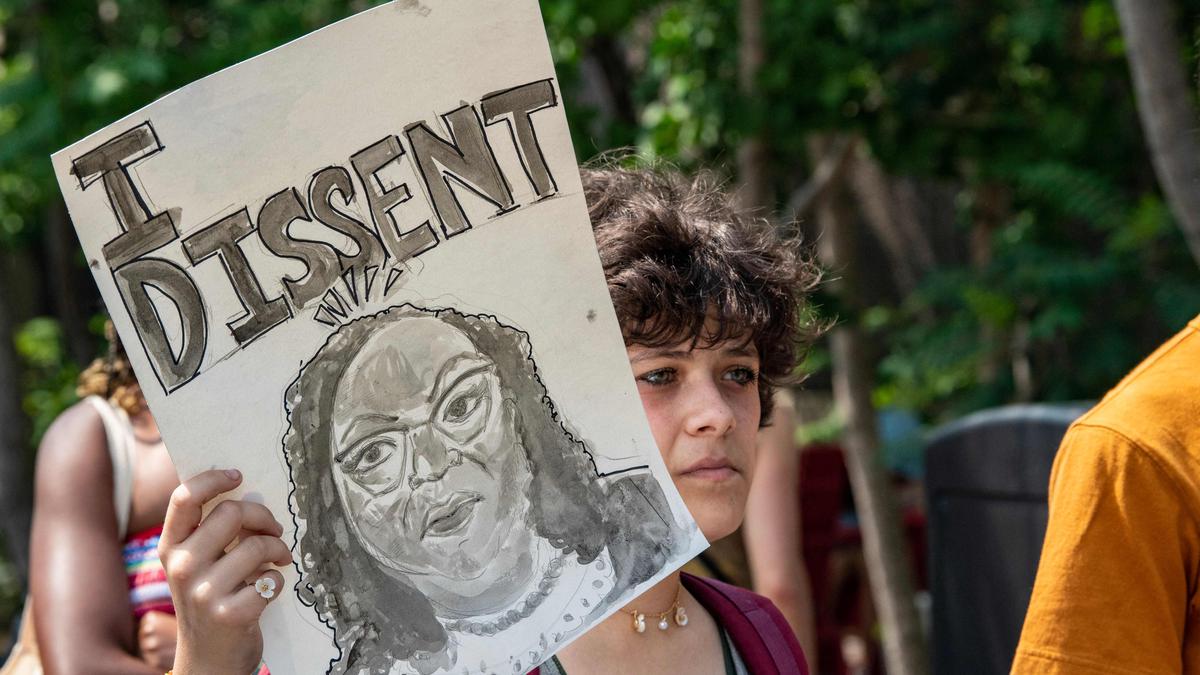
Striking a blow against affirmative action in America Premium
The Hindu
The U.S. seeks to eliminate all distinctions based on race universally, which is a narrow view of equality and which prevents broad-based race conscious measures
In a ground-breaking decision, on June 29, 2023, in Students for Fair Admissions vs Harvard, the United States Supreme Court (SCOTUS) deemed the race-conscious admission policies at Harvard and the University of North Carolina (UNC) as unconstitutional and violative of the Equal Protection Clause in the Fourteenth Amendment.
As Chief Justice John Roberts stated, “Eliminating racial discrimination means eliminating all of it.” This ruling profoundly impacts affirmative action programmes, where ‘race’ has historically been a factor to foster diversity in college admissions, such as in Texas and Michigan. Many believe that the Harvard judgment now makes affirmative action nearly impossible in the U.S.
SCOTUS underpinned its verdict with four reasons. First, it emphasised that the equal protection clause is colour-blind, and the term “equal protection” means identical treatment. Thus, race-based affirmative action contravenes this promise. Second, it affirmed that any such contravention could only be justified if the state has a compelling goal, and affirmative action is absolutely necessary to attain it. The state must articulate this goal clearly to enable judicial scrutiny. The court found Harvard and the UNC’s objectives, such as “training future leaders”, as commendable but vague. Third, the Court reiterated an earlier ruling that affirmative action policies should have a ‘sunset clause’. However, both Harvard and the UNC lacked this. Lastly, the court held that affirmative action should not rely on racial stereotypes or disadvantage anyone based on race — two aspects it identified as problematic in this case.
With Indian courts often drawing upon U.S. judgments, and given shared histories of discrimination based on caste and race (India and the U.S.), it is pertinent to examine the implications of this decision for India. Can this lead to ‘reservations’ being either curtailed or considerably diluted?
The Indian and U.S. Constitutions are poles apart on how they treat affirmative action. The U.S. Constitution is silent on it, prohibiting only the denial of “equal protection”, leading to varied interpretations of this amorphous phrase depending on the sitting Justices. To today’s majority, it means exactly what it meant in the 19th century: colour-blindness. To the dissent, it means consciously treating historically-oppressed races differently.
The Indian Constitution is more clear, thanks to its framers. It expressly allows affirmative action in favour of backward classes in matters of education (Article 15) and jobs (Article 16). Article 16 expressly permits “reservations” in jobs, something that is unique to the Indian Constitution. In fact, this reservation provision was part of the original Constitution as enacted on January 26, 1950, unlike affirmative action in education which was introduced the next year through the First Amendment. India’s courts routinely debate the granular questions: what percentage of seats or posts can the state reserve? How should the beneficiary classes be identified? Unlike the U.S., however, India’s courts do not debate as to whether affirmative action is fundamentally permissible, for the Constitution conclusively answers that question.
Another distinction is the notion of equality that lays the foundation for affirmative action in both jurisdictions. The U.S. seeks to eliminate all distinctions based on race universally, the reason being equality cannot mean different things for different individuals. This applies even for affirmative action that may be justified to undo the historic discrimination faced by African Americans or Hispanics (or other groups). Thus, measures which treat one race as distinct from another in any manner, including a preference in education, are viewed strictly and against equality. This narrow view of equality is called a formal equality and prevents U.S. courts from allowing broad-based race conscious measures.











